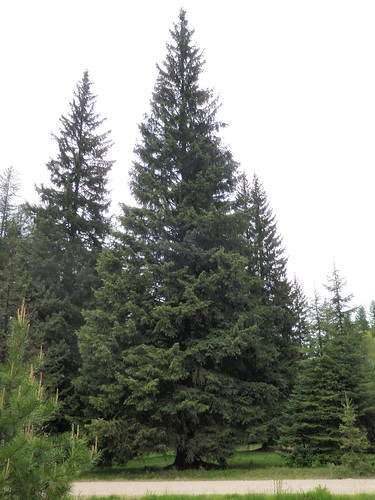
As the 88-foot Engelmann spruce is paraded into Washington, D.C., today, Nov. 25, it brings with it an annual tradition that has been rooted in history and shared by millions of Americans for decades.
The 2013 Capitol Christmas Tree is a gift from the Colville National Forest and people living in Washington State. The Washington community raised the money and support needed to help harvest, transport and decorate the tree that will stand on the west lawn of the U.S. Capitol. They also helped with a collection of smaller trees for various offices in D.C.
The tree will be lit by Speaker of the House John Boehner during a ceremony at 5 p.m. Dec. 3.
The tradition of a tree on the Capitol grounds dates back to 1964, with the Forest Service providing the trees all but two years since 1970.
“I know a lot of work goes into getting the tree from the forest to Washington, D.C., and we’re grateful for all that the U.S. Forest Service does to deliver the tree safely and soundly to us,” said Stephen T. Ayers, the Architect of the Capitol, who is responsible for the care of more than 553 acres of grounds and operation and maintenance of 17.4 million square feet of buildings, including the U.S. Capitol.
The first tree, a Douglas fir, survived through the 1967 celebration but succumbed to wind and root damage. In 1968 and 1969, the Capitol Christmas trees were assembled by combining a pair of eastern white pine trees, but that proved cumbersome and ultimately unsatisfactory. The Capitol Architect turned to the Forest Service to begin providing the tree.

Providing the tree is a labor of love that begins up to two years in advance. A team in the Forest Service headquarters in Washington, D.C., coordinates with field employees from the chosen forest. No tax dollars are used. However, Forest Service employees are assigned to help oversee the project.
The carefully chosen tree is selected by the Architect of the Capitol based on several criteria, including shape and fullness viewed from all sides, preferred height of between 60 feet and 80 feet tall, foliage that is rich, characteristics of needle retention and pliability of branches, and ease of harvesting, loading the moving the tree out of the forest.
Roughly a year before the tree is lit, partners and people throughout the state where the tree will be harvested create a grassroots organization that raises the money and support needed to harvest, transport and decorate the tree. That grass-roots community effort to give the gift to all Americans is one reason it is referred to as “The People’s Tree.”
With great fanfare, the tree leaves the state and is followed by a caravan of caretakers for the journey to D.C. with stops in towns and cities along the way. The tree makes a last stop at Andrews Air Force Base, Md., before being escorted into the District.
“That’s when the awesome responsibility for the tree is handed over to us,” Architect Ayers said. “Once it is delivered to the Capitol, our Capitol Grounds crew springs into action. In a very short amount of time, they unload the tree off of the trailer, move it across the lawn with a big crane, and center it perfectly on the West Front and secure it in the ground.”
Ayers said in a matter of days the crew string the tree with tens of thousands of lights and hang between 3,000 and 5,000 handmade ornaments on its branches. Often times, the weather makes this task more challenging with the crew working through rain, snow, and intense winds.
“When all is said and done, each year the tree looks terrific and, to me, the holiday season officially begins with the lighting of the Capitol Christmas tree,” he said.
The National Christmas Tree, which is on the grounds of the White House, will be lit Dec. 6. The National Tree is, according to the National Park Service, dates back to 1923 under President Coolidge and has gone by different names over the years and includes a series of living and cut trees.
Both tree lighting ceremonies are broadcast live.
The 2014 U.S. Capitol Christmas tree will come from the Chippewa National Forest in Minnesota.

